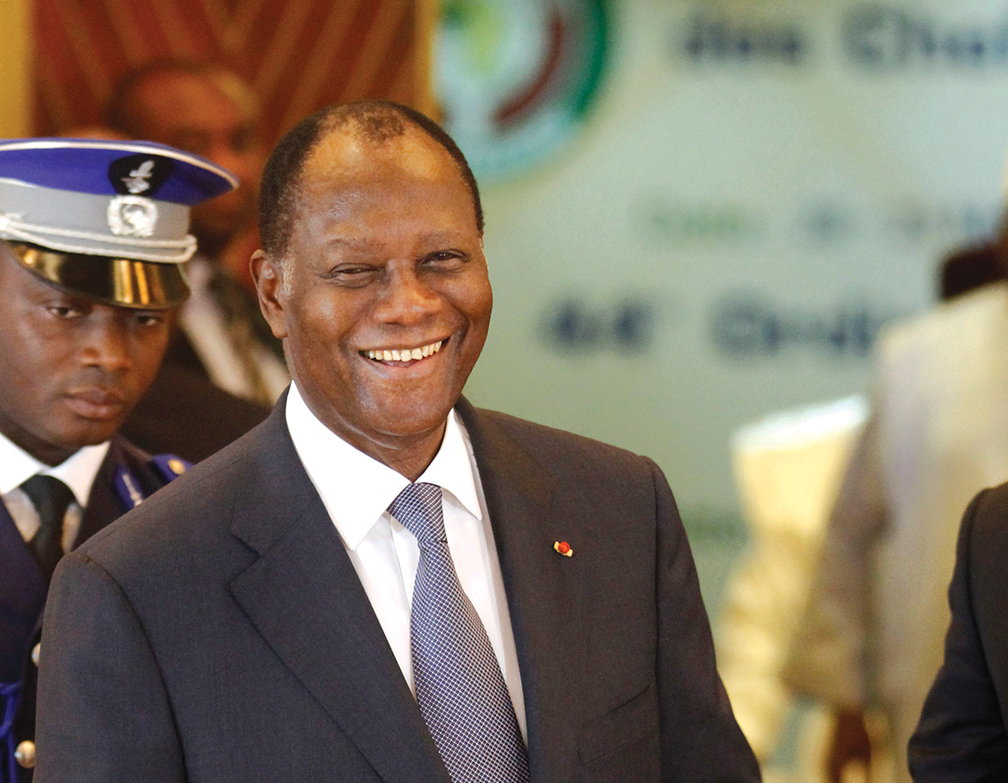Côte d’Ivoire President Alassane Ouattara [REUTERS]
REUTERS
Côte d’Ivoire is re-emerging as the prime investment destination in West Africa after a decade of political turmoil, but President Alassane Ouattara must weed out corruption and promote reconciliation to keep cash flowing in.
Long considered the jewel in the crown of France’s former West African territories, a 1999 coup destroyed the reputation of Côte d’Ivoire, the world’s largest cocoa producer, as an island of stability in a troubled region. A bloody presidential election in 2000 and a rebellion two years later triggered an exodus of capital that undid decades of development, dubbed “the Ivorian Miracle.”
With peace finally restored, French construction company Bouyges, oil companies such as Tullow and Lukoil, and South Africa’s Standard Bank are among those flocking to invest.
“We lost half of our companies during that time,” Trade Minister Jean-Louis Billon said. “The level of poverty increased from 10 percent to almost 50 percent. Now we want to move forward.”
With Ouattara, a former International Monetary Fund official, at the helm, Côte d’Ivoire’s $40 billion economy, comprising nearly half of West Africa’s six-nation CFA currency bloc, embarked on a dramatic revival. It posted growth of more than 9 percent in 2012 and 2013, and the government is targeting double digits in 2014 as it seeks to make up ground on neighboring Ghana, a new oil exporter.
Large-scale infrastructure projects, shelved during a decade of political deadlock, are springing back to life. A motorway linking the port of Abidjan to the administrative capital Yamoussoukro opened in late 2013. Bouyges is pressing ahead with a long-delayed third bridge across Abidjan’s lagoon to unlock congestion.
Heavy investment in electricity generation aims to boost output from 1,600 megawatts to 4,000 by 2020 as Côte d’Ivoire, already a power exporter, seeks to become a regional energy hub.
Donors also have thrown themselves behind Ouattara’s reconstruction program. At a conference in Paris in December 2012, they pledged $8.6 billion — double the amount requested — to improve infrastructure under a 2013 to 2015 plan.

